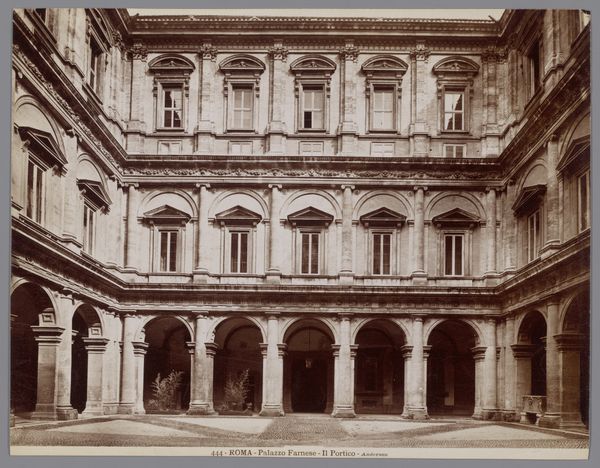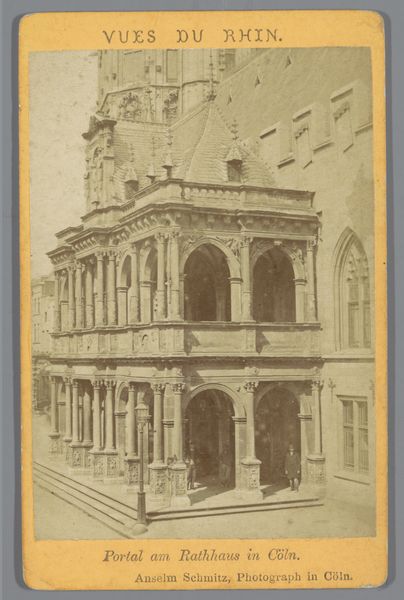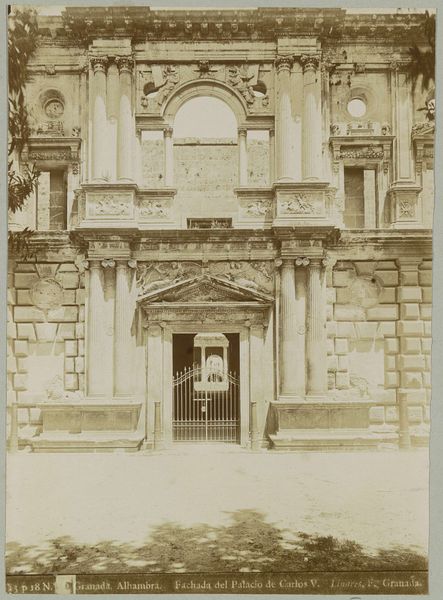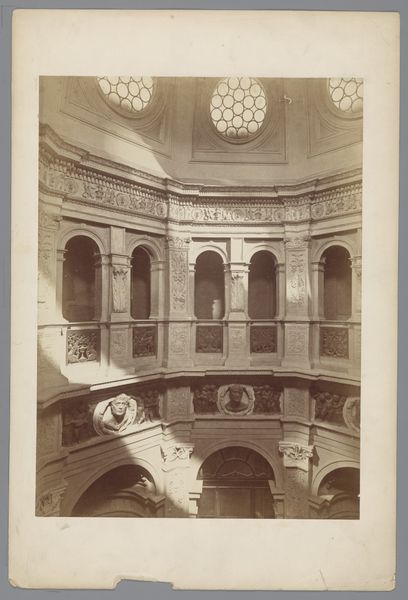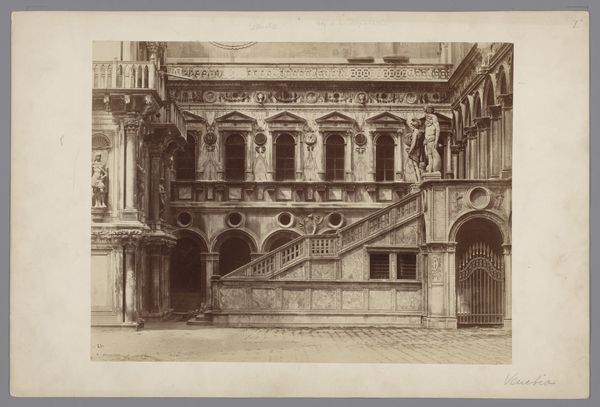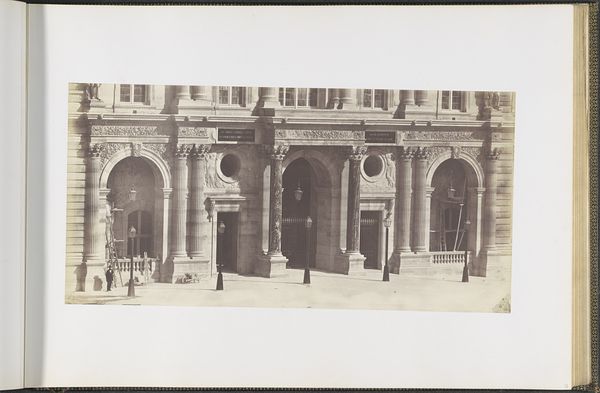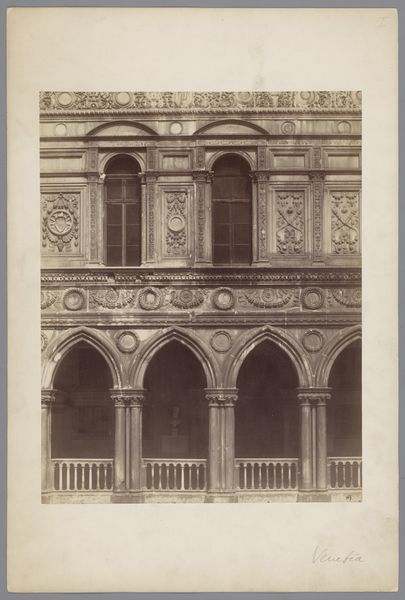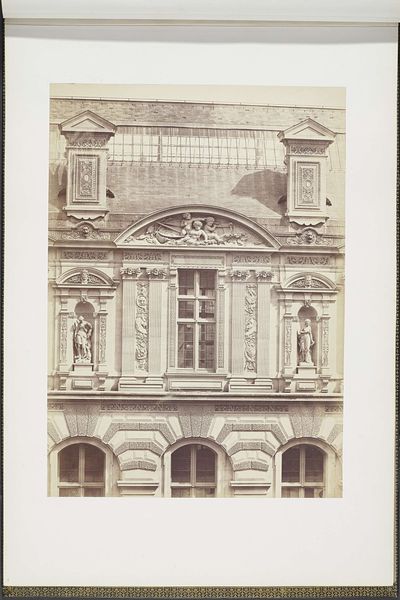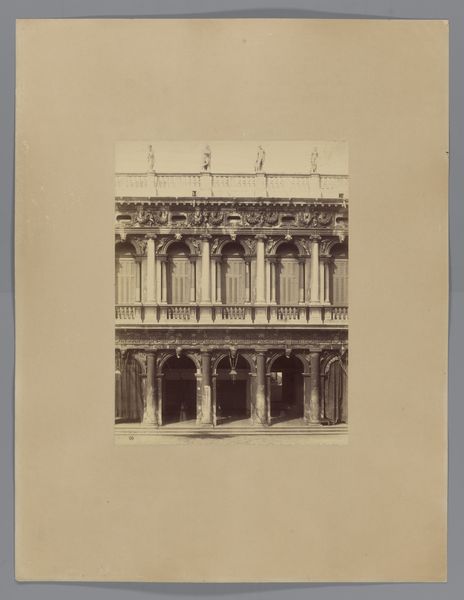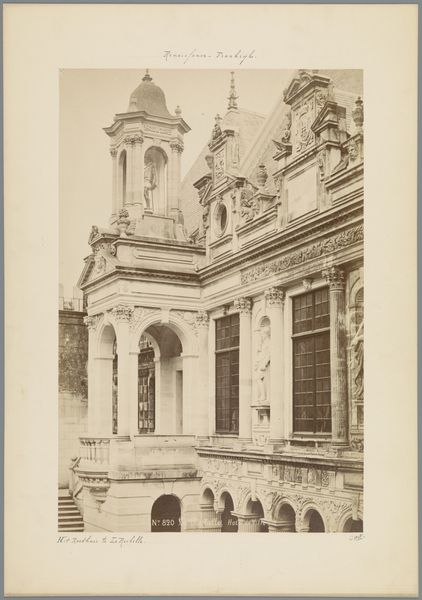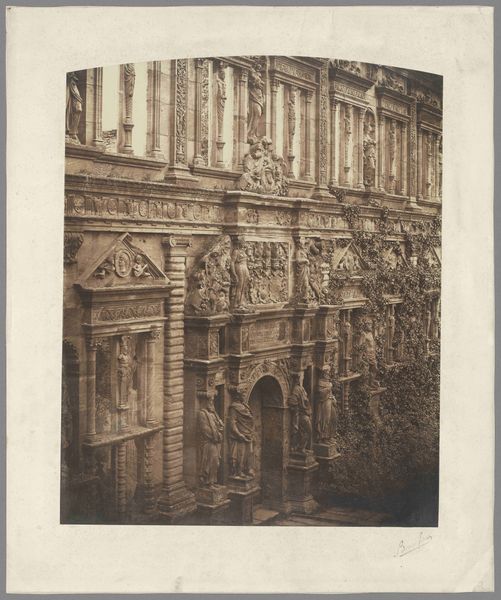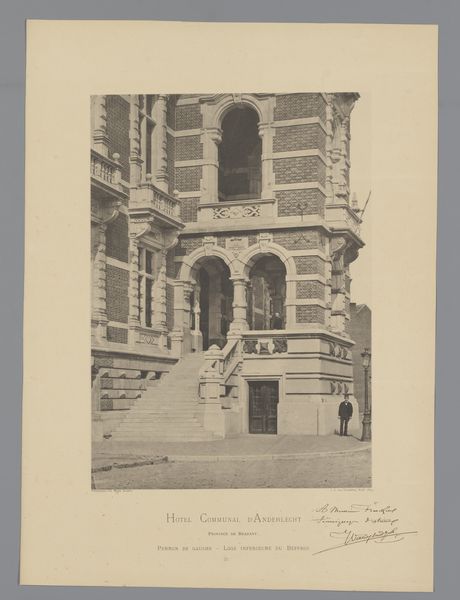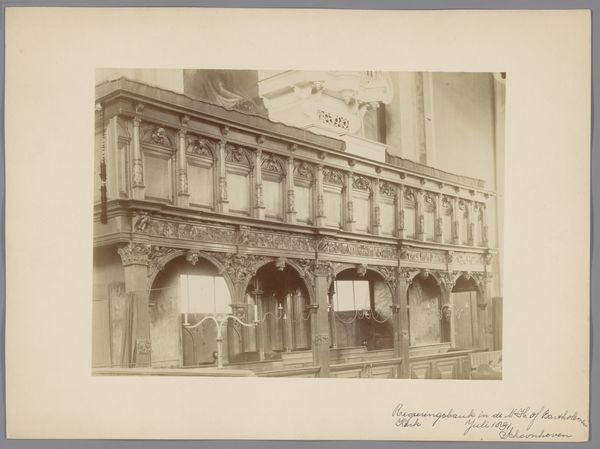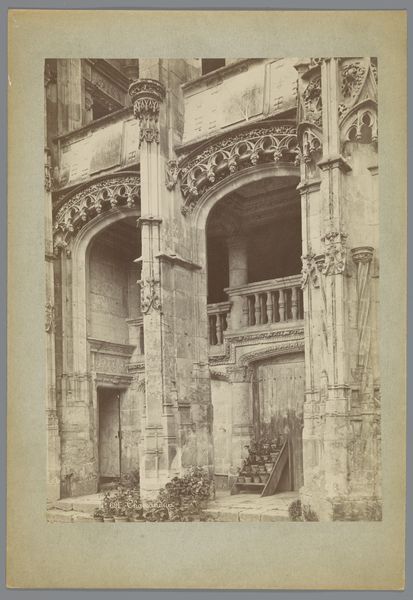
Dimensions: height 220 mm, width 282 mm
Copyright: Rijks Museum: Open Domain
Curator: Well, hello there! Prepare to be transported back in time, back to when opera houses were the cathedrals of culture. We are looking at a photograph entitled, "Gezicht op de Weense Staatsopera, Oostenrijk" by Hermann Heid, taken sometime between 1869 and 1891. It’s a gelatin-silver print, capturing a truly magnificent example of Neoclassical architecture. Editor: Immediately, what strikes me is the…grandeur. A certain deliberate sterility as well, almost as if it's striving for an unattainable perfection, you know? It's imposing. Makes you wonder what operas were playing there in those days. Curator: Absolutely. Heid's perspective offers an uncluttered view. He doesn't invite any pesky carriages or figures to interrupt the purity of form. This focus echoes the era’s fascination with classical ideals, of course. It embodies imperial power, where culture literally assumes center stage in urban life. And gelatin-silver prints afforded a crispness and clarity that was changing how people understood images of buildings. Editor: But does that quest for order maybe overshadow the spirit of the place? I bet backstage was a total chaotic mess during a performance, like an attic full of wigs and screaming divas! All of that's kind of edited out. I guess photography does what painting used to do for nobility and authority—reaffirm everything that "is", through careful curation and framing of reality. Curator: That's it precisely! It projects Vienna as the cultural heart of an empire, even while society bubbled and fermented underneath. Though Heid focuses mainly on the exterior here, opera, then and now, becomes part of a curated urban brand! Editor: Exactly, a theater is never just bricks and mortar. They are social artifacts meant for everyone...or not. Who frequented the Staatsoper then? Was this a cultural meeting place for the "hoi polloi" or simply another demonstration of power by the establishment? The picture can't quite answer those. Curator: Very interesting! But at the very least it brings all of this and more into view, or perhaps even clearer perspective… a conversation captured between art and life. Editor: Absolutely. There's so much more to it when you consider how photographs shaped how we think about both power and beauty. It also feels poignant somehow, realizing how little the facades change even if much else shifts in a society.
Comments
No comments
Be the first to comment and join the conversation on the ultimate creative platform.
